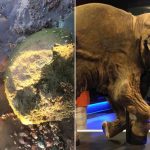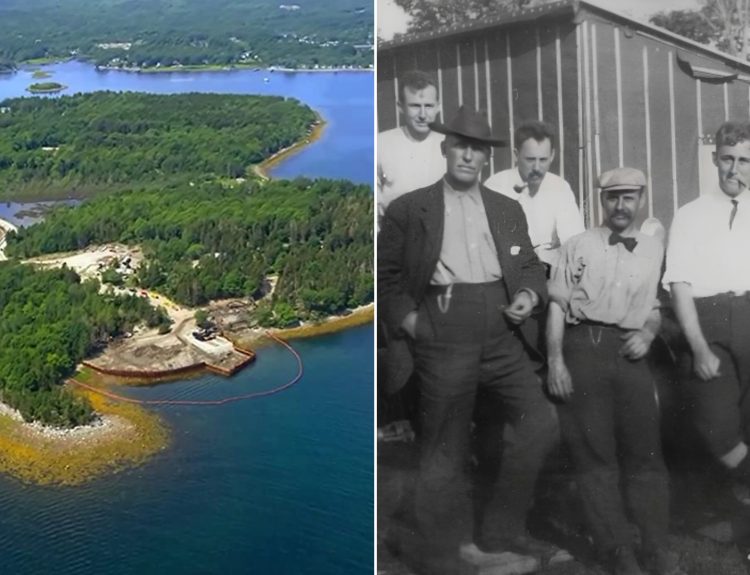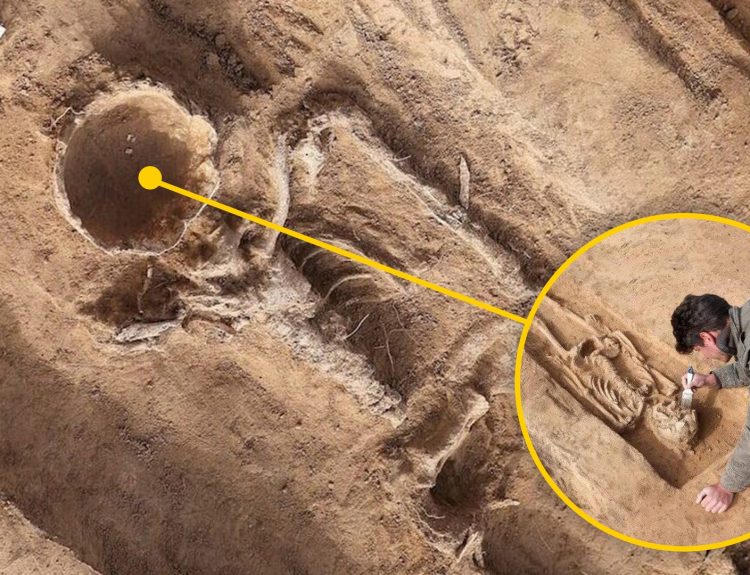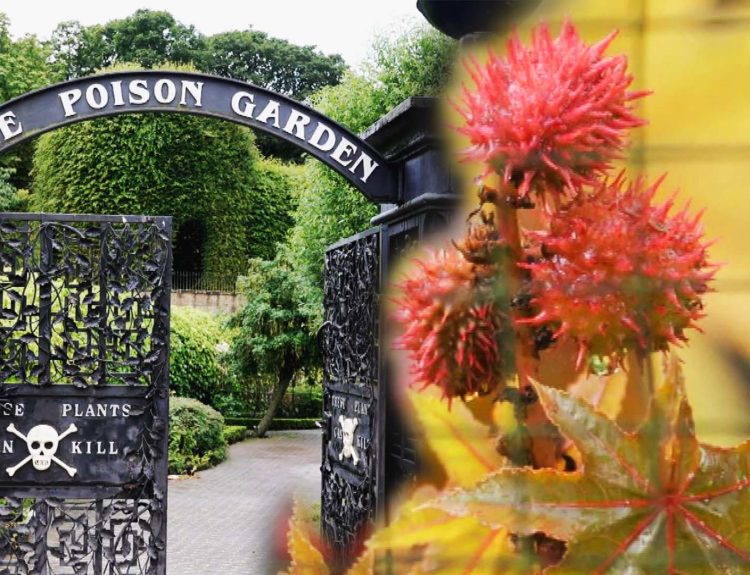Off the coast of Belize, there is a strange and beautiful natural formation that has fascinated visitors and scientists alike for centuries. On the surface, this circular wonder of nature looks pristine and pure, but as the saying goes, “still waters run deep.” That is definitely the case with the Great Blue Hole, as this unusual feature is called.

Found near the center of Lighthouse Reef, part of the Belize Barrier Reef Reserve System, the Great Blue Hole is a massive underwater sinkhole. It gets its aptly descriptive name because the water within the sinkhole appears to be a darker, more vibrant shade of blue, making it stand out from the turquoise Caribbean water that surrounds it. Those dark waters offer a hint at what is lurking below.
Formed From the Destructive Forces of Nature
Geologists have studied the Great Blue Hole and concluded that it formed over time between 153,000 and 15,000 years ago when the planet experienced several ice ages, with warmer cycles between them. Ocean levels were much lower during the ice ages, but sea levels rose considerably when the ice melted.

The Great Blue Hole started as a large cavern within a limestone cave system. The roof of the cave collapsed, creating the round sinkhole. When the ocean levels rose again, the sinkhole flooded, leaving the appearance of a circle of darker water in the ocean.
A Deep, Dark Abyss
The water in the Great Blue Hole only appears darker in color because of the depth of the sinkhole. It is about 410 feet deep … much deeper than the surrounding Caribbean Sea. The deep shade of blue is indicative of its great depths. The shallower water outside the Great Blue Hole appears to be much lighter in color. This really makes the Great Blue Hole an attention grabber.
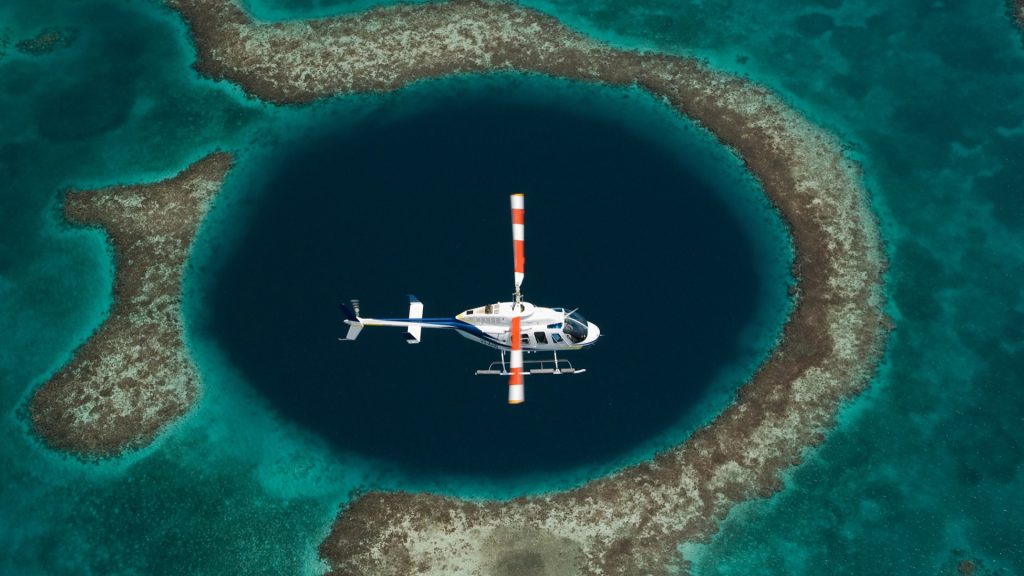
Its enormous size is another reason why the Great Blue Hole is so special. It measures approximately 1,000 feet in diameter, dwarfing the tourist boats that bring visitors to this amazing place.
Jacques Cousteau Loved the Great Blue Hole
The late Jacques Cousteau, the famed ocean explorer, sailed his research ship, the Calypso, to the Great Blue Hole in 1971. He and his crew scuba dived in the Great Blue Hole, although they did not reach the bottom. Cousteau named the Great Blue Hole as one of his top five diving sites from his many expeditions, a statement that helped bring more attention to the site.

Jacques Cousteau’s dives in the Great Blue Hole confirmed the theory that it was created from a collapsed cave, but his study also yielded some interesting anomalies. He noted that there are stalactite formations beneath the water of the Great Blue Hole. These can only have formed when sea levels were significantly lower. Cousteau also observed that the stalactites grew at a five-degree angle, showing that the underlying plateau has shifted in the geological past. Cousteau uncovered some of the Great Blue Hole’s secrets, but there was more to learn.
The Great Blue Hole Tempts and Challenges Divers
Diving in the Great Blue Hole is not as easy as the tranquil waters make it seem. According to NOAA, the National Oceanic and Atmospheric Administration, the maximum recommended diving depth for a conventional, experienced scuba diver is about 130 feet. Specially trained technical divers can descend to around 300 feet but going deeper than that is not recommended.
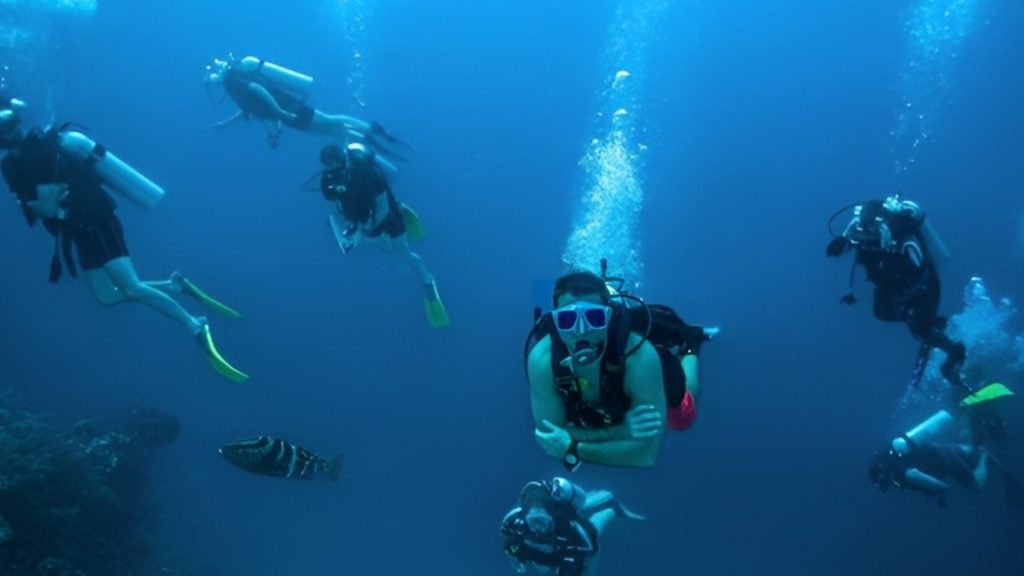
When divers reach these depts, they are at a greater risk of developing decompression sickness, more commonly known as “the bends.” The change in pressure causes the nitrogen gasses in the body to form bubbles in the body’s tissues. It is extremely painful and potentially deadly, which is why Jacques Cousteau did not reach the bottom of the Great Blue Hole. He saved that accomplishment for his grandson.
Ocean Exploration Is in His DNA
Fabien Cousteau is the grandson of Jacques Cousteau. He inherited a love of the ocean, a yearning for exploration, and a desire to protect the planet’s oceans from his famous grandfather. Fabien grew up hearing stories about his grandfather’s fascination with the Great Blue Hole. Fabien set out to do what his grandfather could not … reach the bottom of the Great Blue Hole.
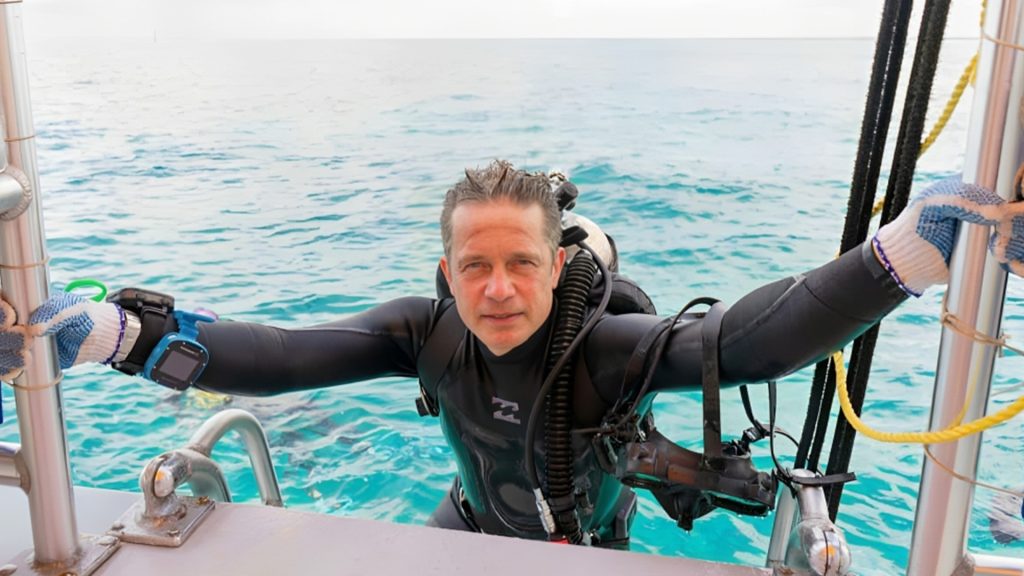
Fabien Cousteau soon learned that there was someone else who shared his goal … billionaire adventurer Richard Branson. What’s better than one determined explorer? A whole team of them! Fabien Cousteau and Richard Branson partnered with a world-renowned oceanographer, Erika Bergman, and developed a plan to get to the bottom of the Great Blue Hole.
Richard Branson’s High-Tech Toys
Richard Branson can be compared to a real-life Tony Stark … a billionaire with an unquenchable thirst for adventure and all the high-tech gadgets and toys to make it happen. Branson, the owner of Virgin Group’s subsidiary, Virgin Oceanic, owns a fleet of state-of-the-art submersibles. How handy!
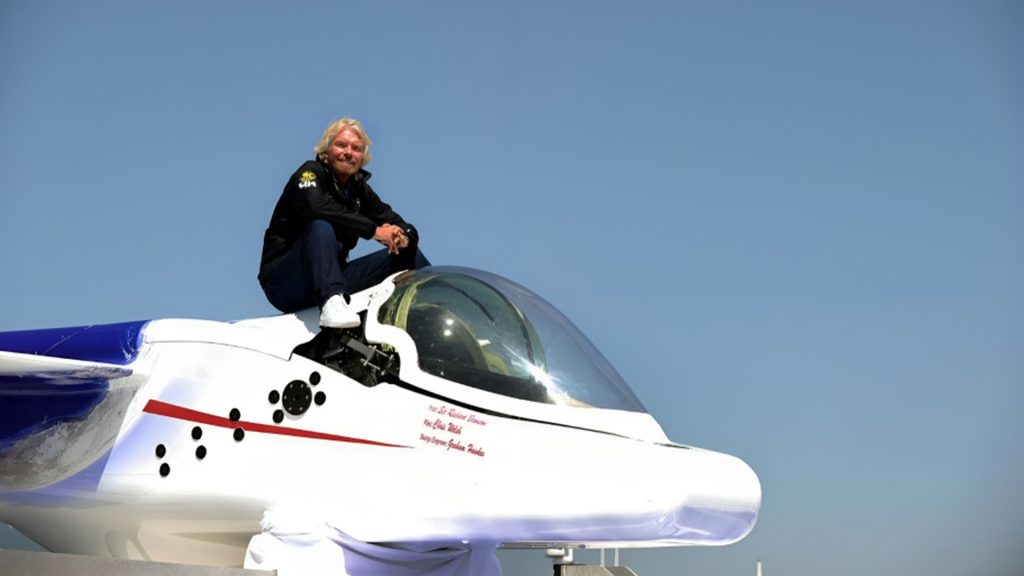
One of his submarines, Aquatica, was outfitted for the journey. Erika Bergman, the third member of the exploration team, trained to pilot the sub for the trip through the depths of the Great Blue Hole.
A Journey of Discovery and Education
In addition to his success at starting and growing lucrative businesses, Richard Branson is an activist who strives to use his wealth and name recognition to raise awareness about important causes. The issues of conservation and climate change are among his favorite causes. Branson sought to use his expedition into the Great Blue Hole as a way to shine a light on these issues.
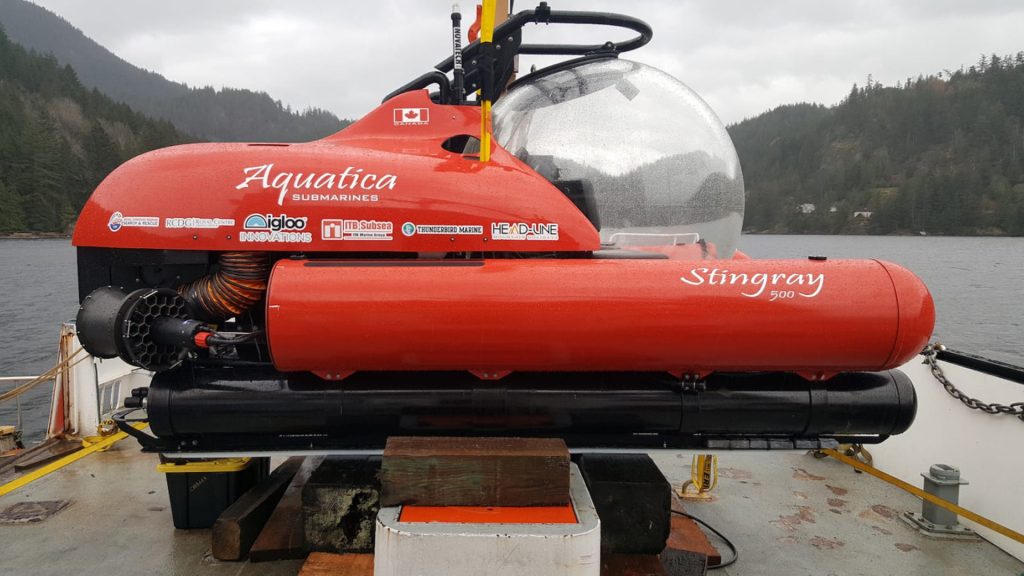
Branson and his team set up a live stream via the Discovery Channel so the rest of the world could join in on their experience without getting their feet wet. Literally! The hope was to educate the public about the need to protect our oceans and to advocate for sustainable and eco-friendly lifestyles. After Branson and Cousteau saw what was at the bottom of the Great Blue Hole, this need became even more pressing.
An Earlier Voyage Looked for Answers to a Mesoamerican Mystery
It should be noted that Branson, Cousteau, and Bergman were not the first team of adventurers to attempt to explore the floor of the Great Blue Hole. A few years before the Aquatica traveled to Belize, a group of researchers from Rice University and Louisiana State University dove into the Great Blue Hole looking for answers.
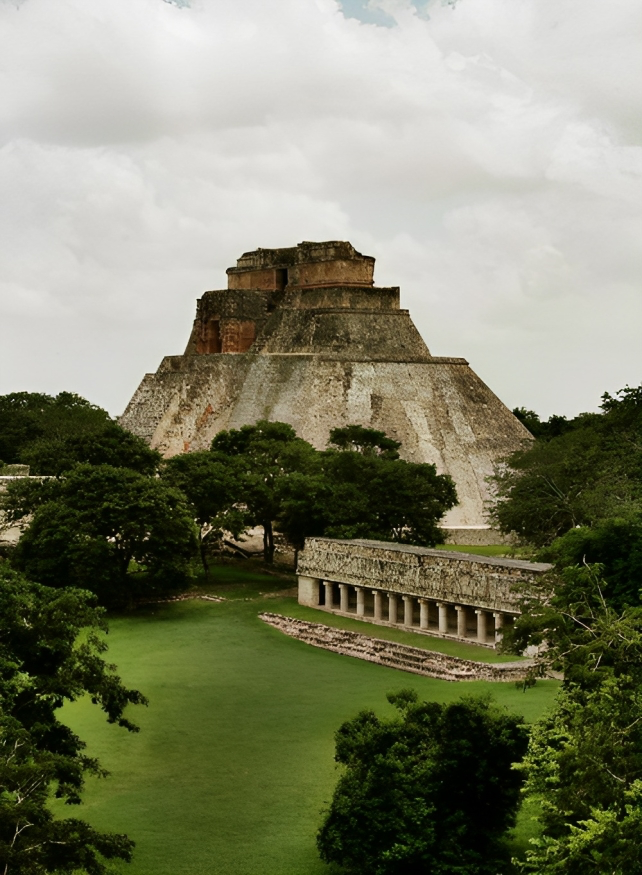
Their goal, however, was different. They hoped that by peering into the deep abyss of the Great Blue Hole they could find clues to help them unravel the mystery of downfall of the Mayan Civilizations. The researchers knew that cenotes, which dotted the Mayans territory, played a significant role in their religion. Did this also extend to the Great Blue Hole, arguably the more prominent cenote-like natural feature of Central America?
No Closer to Solving the Mayan Mystery
Artifacts and structures left behind by the Mayan civilization can be found across Belize and a good portion of Central America, so it was logical to theorize that the Great Blue Hole may have been a center for worship for these Mesoamerican people. The researchers from Rice and Louisiana State, however, were unable to reach the bottom.
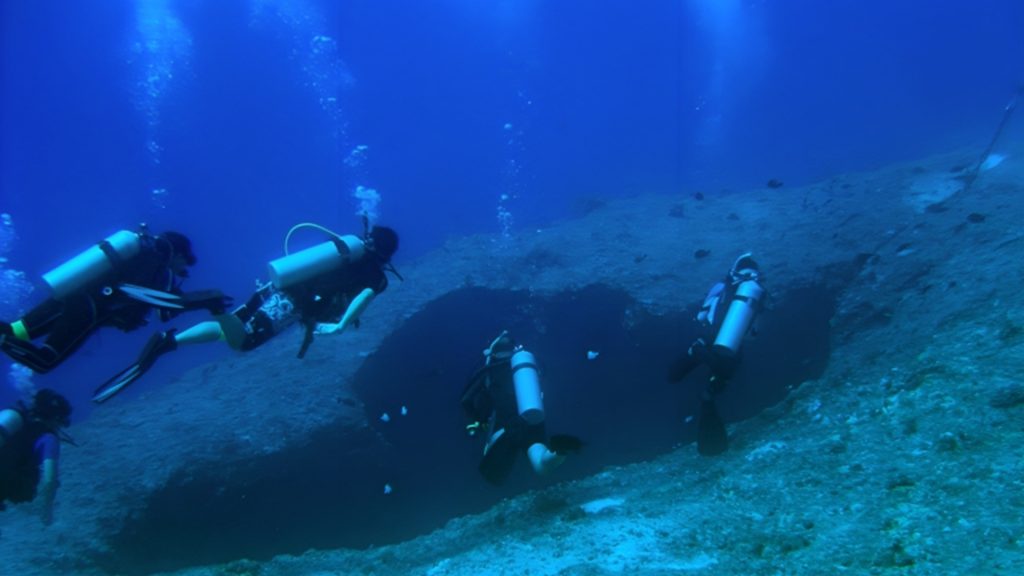
As they approached the 100-feet depth, the university team encountered a layer of toxic hydrogen sulfide. The deadly layer extended down roughly 20 feet. Hydrogen sulfide occurs naturally as a result of decaying organic material and chemical reactions between the sea water and the rocks. When layers of hydrogen sulfide form in water, they can suffocate animals that become trapped in it. The researchers observed the remains of several marine animals in the layer which prompted them to end their expedition.
To Make People Fall in Love with the Ocean
Richard Branson took a page from Jacques Cousteau’s notebook when he set the goal of helping people fall in love with the world’s oceans. As Jacques Cousteau often said, “People protect what they most love.” Branson is just as passionate about the oceans as the famed explorer and oceanography was.
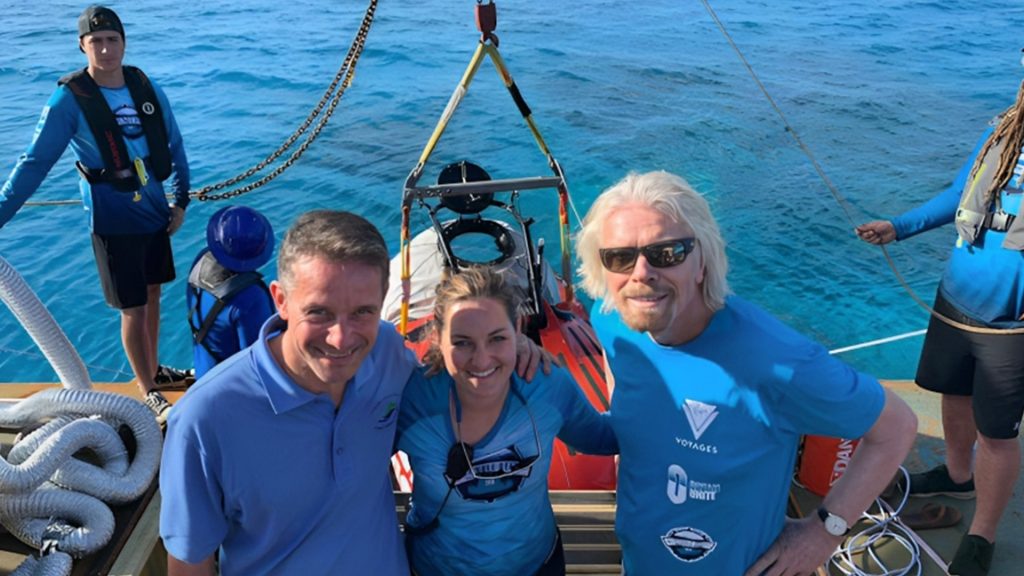
In fact, Richard Branson owns several private islands in the British Virgin Islands. His residence there is a marvel of eco-friendly and sustainable design. He has hosted meetings and summits on global climate change that have a track record of success.
Filmmaker James Cameron Helped Create a Buzz
Filmmaker James Cameron, who gave us the blockbuster 1997 film, Titanic, is also an ocean adventurer. He traveled via submarine to explore the wreckage of the Titanic and then made headlines when he took a different, specially equipped submarine on an even riskier expedition.
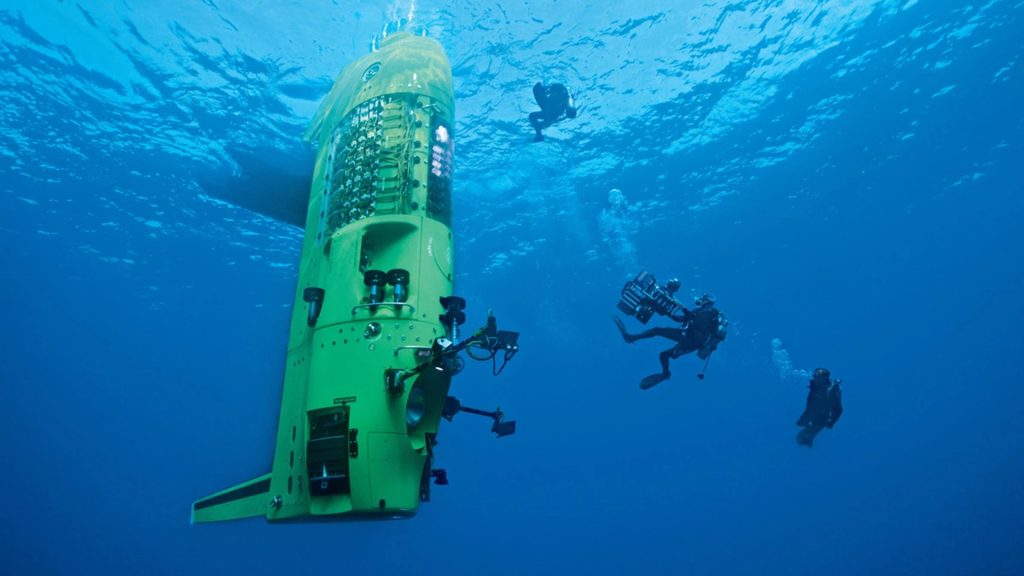
Cameron descended to the bottom of the Mariana Trench. This trench, located in the western Pacific Ocean near the Mariana Islands, is the deepest part of the world’s oceans. Its deepest point, Challenger Deep, is more than 36,000 feet below the surface. The Mariana Trench is one of the least explored regions on Earth. When Cameron took his sub into the Mariana Trench, the world eagerly watched.
Into the Unknown
The Great Blue Hole is deep, but it poses other challenges to divers as well. It is home to diverse marine life, including several species of sharks, such as bull sharks, hammerheads, and reef sharks. There are moray eels as well.
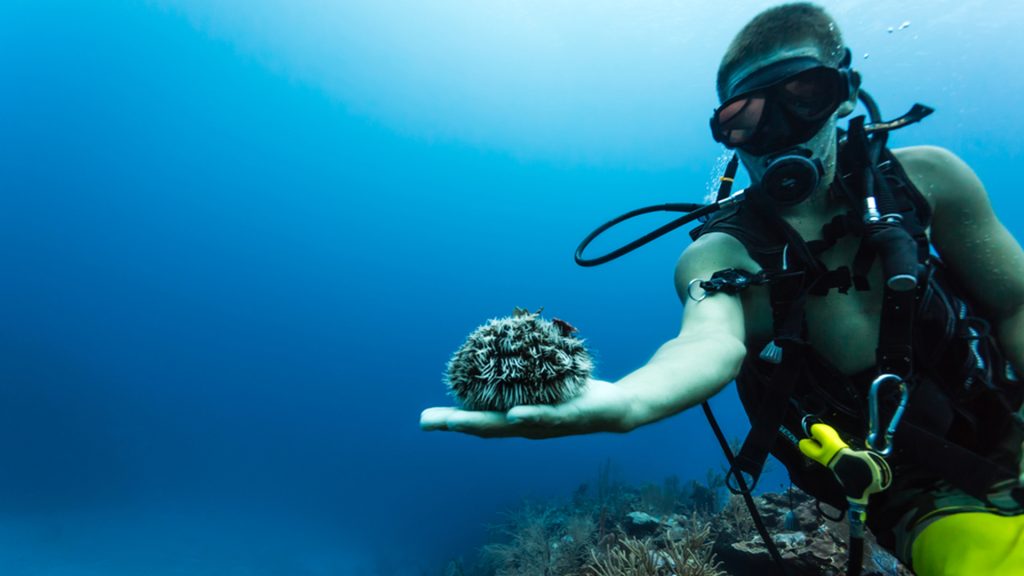
Of course, there are less dangerous sea creatures to see, too. Coral and giant sponges can be found in the Great Blue Hole. Divers can also see lobsters, sea turtles, and plenty of fish. Because the Great Blue Hole is somewhat protected from ocean currents, its ecosystem is unique.
Branson and Crew Encountered Unexpected Obstacles
Richard Branson, Fabien Cousteau, and Erika Bergman were as prepared as they could be to explore the bottom of the Great Blue Hole. They initially worried that folks viewing their live stream wouldn’t get a good view because the Aquatica stirred up sediment. Fortunately, the cloudy water quickly dissipated. What the clear water revealed was unexpected.

The deeper Aquatica descended, the more the crew saw amazing underwater caves, stalactites, and bizarre geological formations. The depths of the Great Blue Hole are truly otherworldly. The presence of stalactites in particular caught the attention of Richard Branson.
Evidence of Climate Change
Stalactites do not form underwater. They form when rainwater or groundwater leeches through limestone, dissolving some of the minerals along the way. When the water that is now saturated with dissolved minerals drips from the cave ceiling, it solidifies to form stalactites.
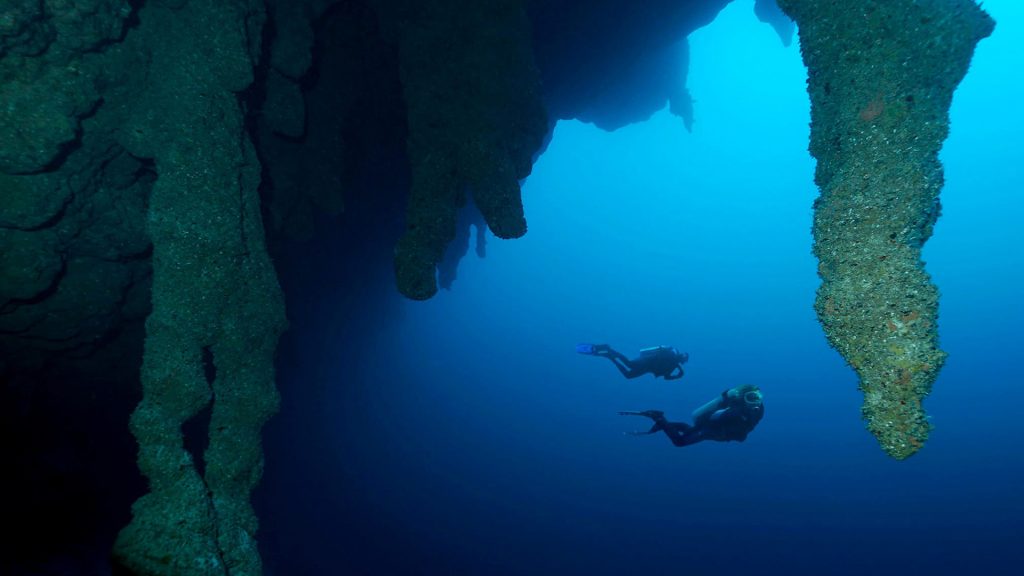
For Richard Branson, the presence of stalactites in the Great Blue Hole serves as a tangible reminder of the constant cycle of change on Earth. He spoke of the “dangers of climate change” and pointed to the stalactites in the Great Blue Hole to show how melting glaciers cause dramatic rises in sea levels.
Beyond the Toxic Layer
Like the team from Rice and Louisiana State University, Branson, Bergman, and Cousteau also encountered the toxic layer of hydrogen sulfide. While this deadly stratification of water has prevented divers from reaching the bottom of the Great Blue Hole, Branson and his team were prepared for this obstacle.
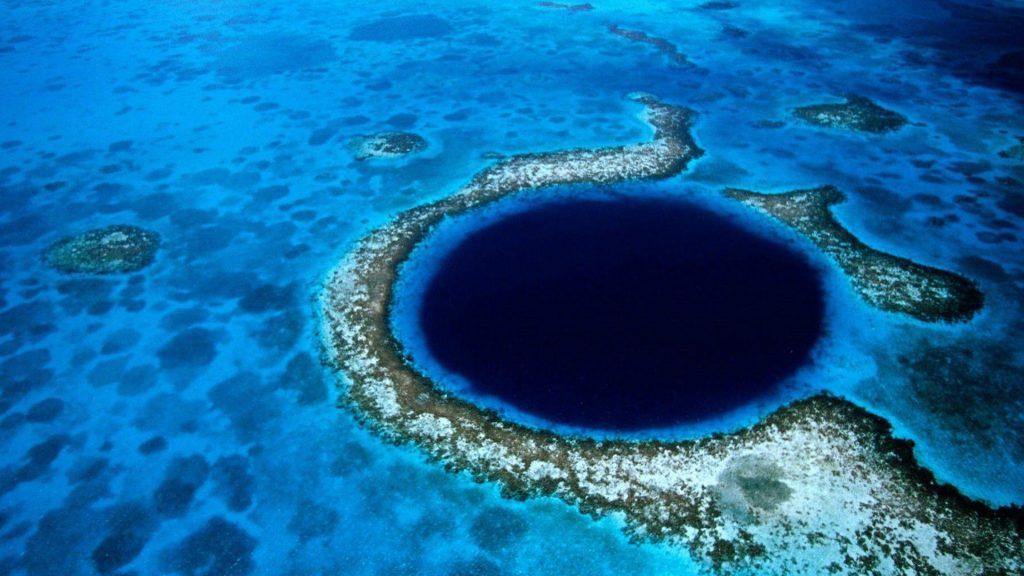
The Aquatica was designed to keep its crew and its equipment safe as it traveled through the toxic layer. With these safeguards in place, Branson, Cousteau, and Bergman were able to safely continue on their quest to reach the floor of the Great Blue Hole. But what would they find there?
Mapping the Depths of the Great Blue Hole
The Aquatica was also fitted with sonar and recording devices. One of the primary goals of the team was to map the lower portion and the bottom of the Great Blue Hole. The upper, more accessible portion, features caves, limestone caverns, and those famous stalactites. What surprises would they find in the rest of the sinkhole?
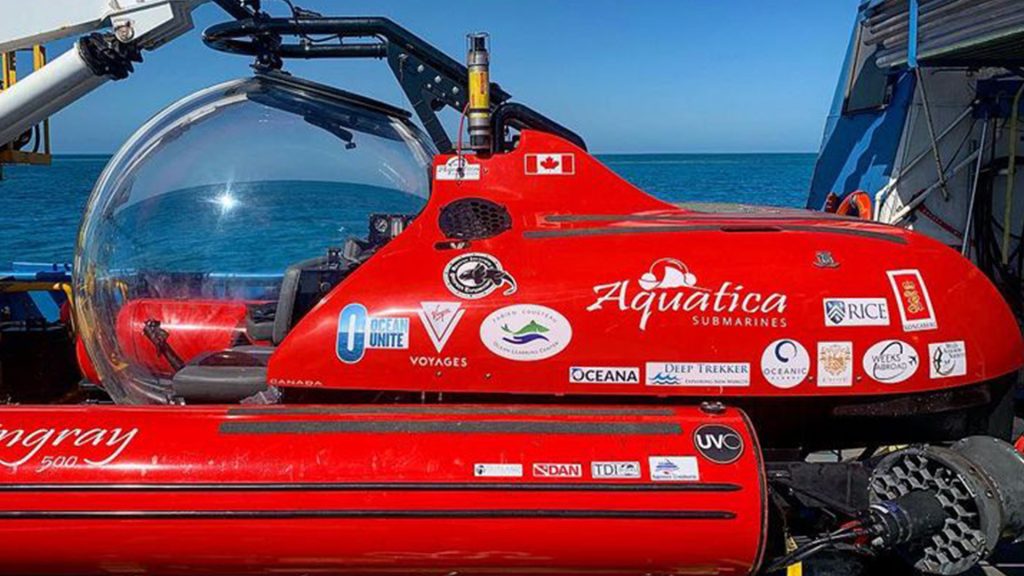
When viewed from above, the Great Blue Hole looks like a tranquil, unspoiled dot in the Caribbean Sea, with clear, pristine waters that have been untouched by man. What the crew of the Aquatica found, however, paints a different picture.
Man’s Tragic Impact on the Environment
At the bottom of the Great Blue Hole, Richard Branson, Fabien Cousteau, and Erika Bergman got a first-hand look at man’s tragic impact on the environment. The floor of this beautiful sinkhole has preserved all the trash and garbage that visitors to the special place have dropped into the crystal-blue waters.
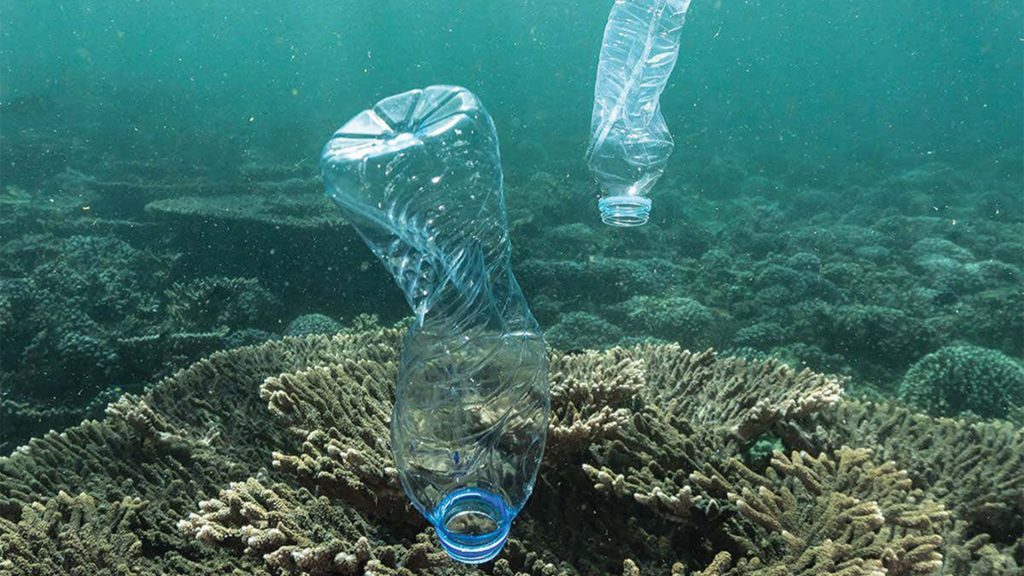
The members of the expedition discovered plastic soft drink bottles, numerous plastic bags, plastic food wrappers, and other bits of trash. In addition, there were some cell phones, a GoPro camera, and other items that were likely dropped by divers. The crew even found the bodies of two divers who perished in the Great Blue Hole several years ago.
Advocating to Real Change Before It Is Too Late
The disgusting amount of plastic and trash lying on the floor of the Great Blue Hole served to re-energize Richard Branson’s commitment to environmental protections. He and his crew members agree that if we want to be able to enjoy the world’s oceans in the future, real change must happen now.
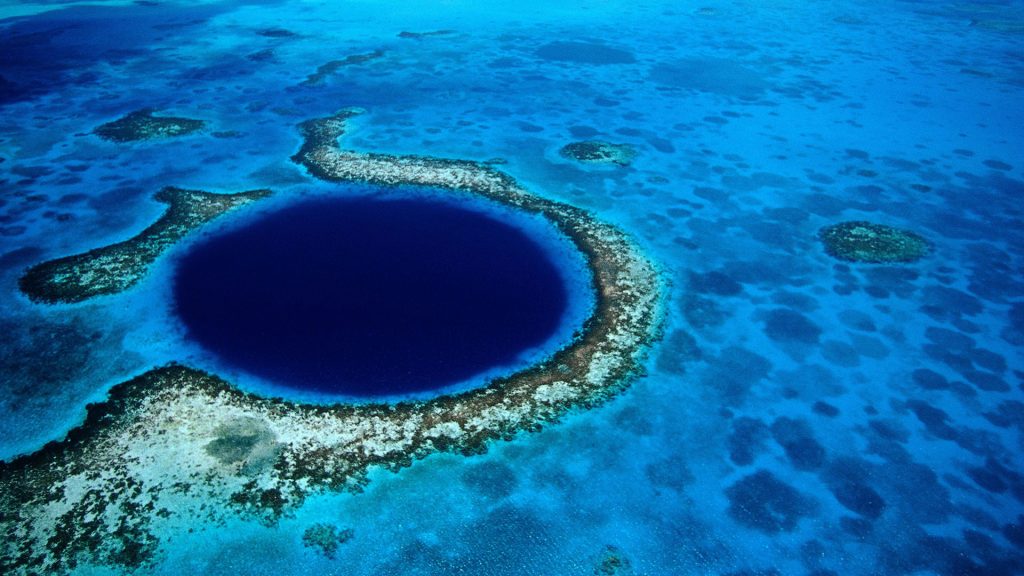
Plastic waste is one of the biggest issues impacting our oceans’ health. Branson is using his discoveries in the deep abyss of the Great Blue Hole as the rallying point as he assembles a committee of powerful and influential people who have decided to band together to protect special places like the Great Blue Hole, as well as the rest of the oceans, from the wasteful nature of mankind.



